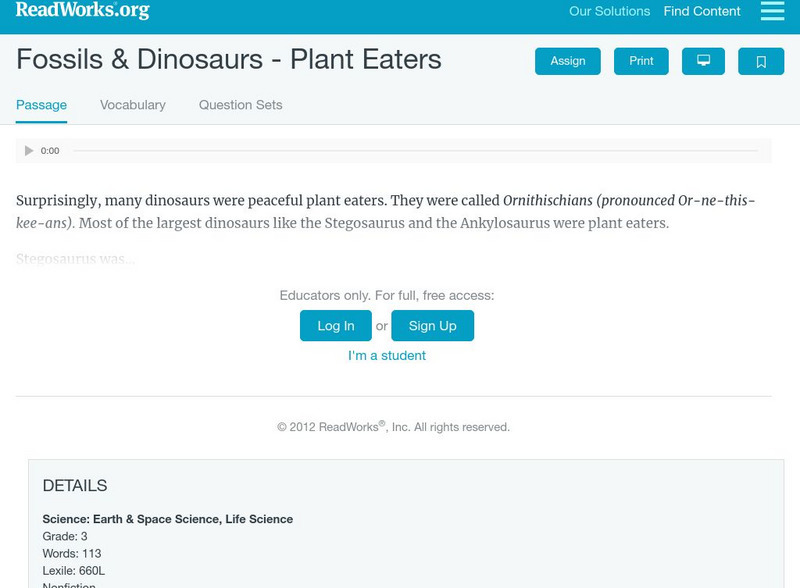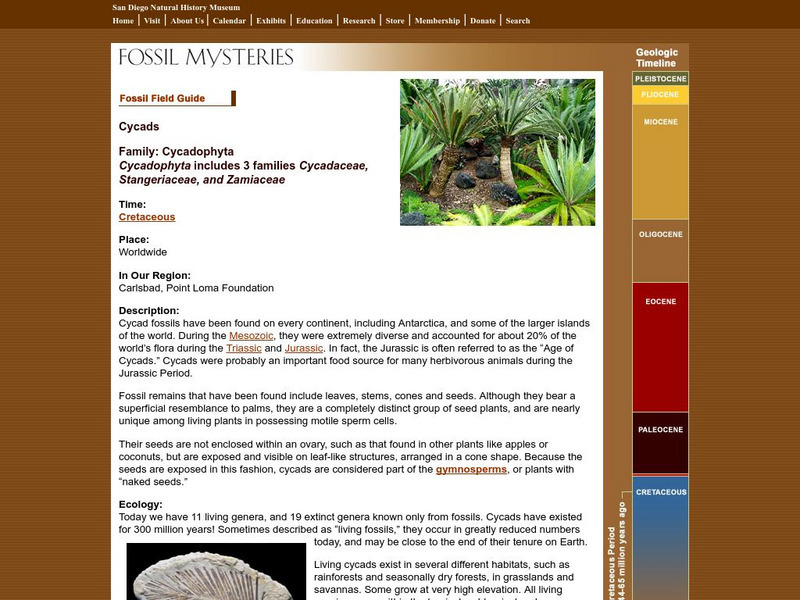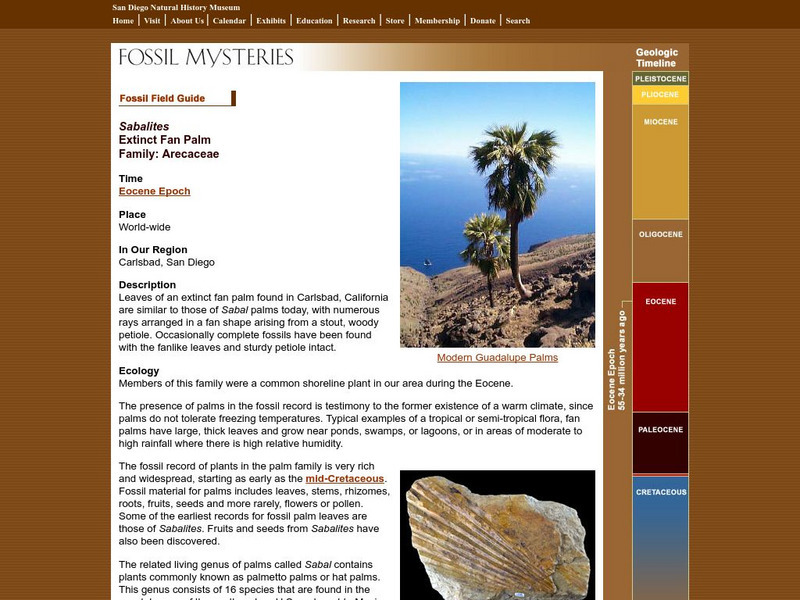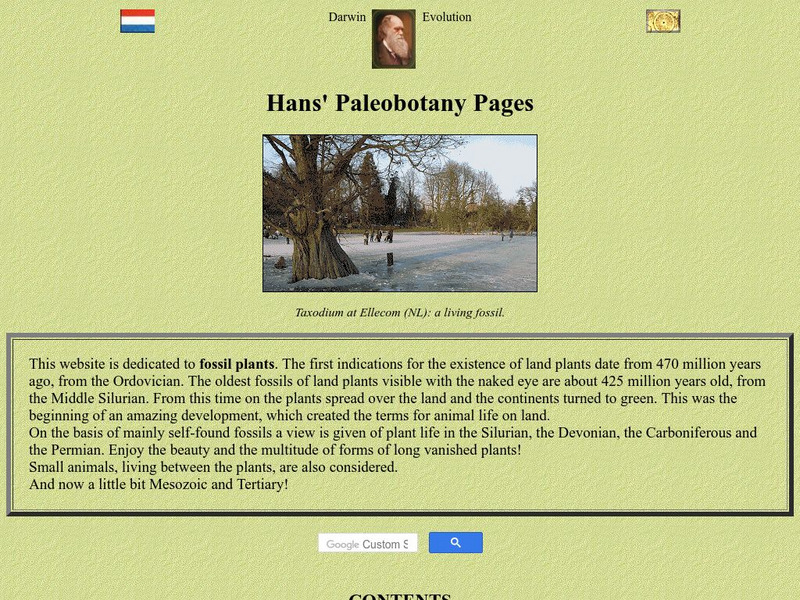Hi, what do you want to do?
Curated OER
How Much Radiation is Around You?
Students examine the use, misuse and fear of radiation. They read an article about radiation on food and discuss the positives and negatives of this process. They answer questions to complete the lesson.
Curated OER
Using Natural Resources In Chinese And Japanese Art
Students discuss the uses and availability of natural resources in China and Japan and how those resources effected visual art from each country. This instructional activity includes two possible enrichment activities.
Curated OER
Not Just For A Baby's Bottom
Eighth graders investigate the presence of talc in the geologic record. The different characteristics of talc is covered. The lesson plan includes background information for the teacher.
Curated OER
Smog Be Gone
Students begin the lesson by identifying greenhouse gases. In groups, they observe and record the effect of the gases on the atmosphere and the temperature of the Earth. They participate in activities that describe the role of...
Other
Plant Fossils of West Virginia
Has great diagrams of plant fossils as well as some general information on prehistoric plants.
Other
Fossil Fun: Plant Fossils
A brief site that explains how plant fossils let us know what the weather and temperature was long ago. Text is supplemented with photographs.
CK-12 Foundation
Ck 12: Third Grade Science: Earth Science: Fossils of Plants and Animals
[Free Registration/Login may be required to access all resource tools.] Explains what fossils are, describes how they form, and discusses what scientists can learn from fossils.
Smithsonian Institution
National Museum of Natural History: Paleobiology: Green River Fossil Collections
Search the collection of 35,000 fossiliferous rocks found within the Green River Formation of Colorado and Utah. View some of these 50 million year old insect fossils in a linked slide show.
Read Works
Read Works: Fossils & Dinosaurs Plant Eaters
[Free Registration/Login Required] This passage describes an example of a plant-eating dinosaur, the Stegosaurus, its appearance, and its eating habits. This passage is a stand-alone curricular piece that reinforces essential reading...
San Diego Natural History Museum
San Diego Natural History Museum: Fossil Field Guide: Cycads
A look at what fossil evidence reveals about the life and ecological interactions of the extinct cycad plant.
San Diego Natural History Museum
San Diego Natural History Museum: Fossil Field Guide: Extinct Fan Palm
A look at fossil evidence that reveals life and ecological interactions of the extinct fan palm tree.
Estrella Mountain Community College
Maricopa Community College: Nonvascular Plants and Nonseed Vascular Plants
Very detailed outline describing several aspects of plant diversity, including vascular vs. nonvascular, evolutionary adaptations, homosporous and heterosporous life cycles, and specific information on some ancient species (Lycophytes,...
Smithsonian Institution
National Museum of Natural History: Paleobiology: The Cambrian Period
Journey into the past while reading this comprehensive overview of the Cambrian Period that covers topics such as the Cambrian Explosion, Burgess Shale fauna, trilobites, fossil evidence, and climate and plate tectonics.
Smithsonian Institution
National Museum of Natural History: Paleobiology: The Ordovician Period
Journey into the past while reading this comprehensive overview of the Ordovician Period that covers topics such as reef ecosystems, Paleozoic Fauna, fossil evidence, and climate and plate tectonics.
Other
American Coal Foundation: Lesson Plan: Coal Formation
In this four-part instructional activity, students will conduct a simulation of the coal formation process and will show the ability to do scientific inquiry. For the final project, they will use their findings they have recorded on...
Smithsonian Institution
National Museum of Natural History: Paleobiology: The Silurian Period
Journey into the past while reading this comprehensive overview of the Silurian Period that covers topics such as life in the seas, invasion of land, fossil evidence, and climate and geology.
University of Florida
Florida Museum of Natural History: Paleobotany and Palynology Image Gallery
An interesting slide show of unique plant fossils, each picture has a caption.
Smithsonian Institution
Smithsonian Learning Lab: Prehistoric Climate Change and Why It Matters Today
Introduce students to environmental issues by studying a time of rapid global warming that occurred 50 million years ago. Lessons, video segments and interactive activities will engage students as they learn about average annual...
Other
Hans' Paleobotany Pages
A good site discussing the history of fossil plants, including oldest land plants and links to related topics.
Australian Museum
Australian Museum: Plant Eating Dinosaurs
The different eating habits of herbivorous dinosaurs are described. The article notes that scientists love to analyze the fossilized stomach contents of dinosaurs.
Other
New Jersey Fossils: Duckbilled Dinosaur
The duckbilled dinosaur was a type of hadrosaurus and existed in New Jersey in the Late Cretaceous Period. A few fossil specimens have been found in areas of New Jersey, with the very first partial skeleton being discovered in...
Climate Literacy
Clean: Carbon Dioxide Sources and Sinks
In this lab activity, learners use a chemical indicator (bromothymol blue) to detect the presence of carbon dioxide in animal and plant respiration and in the burning of fossil fuels and its absence in the products of plant...
University of California
Ucmp: Plantae
At this resource learners can take a look at the plant kingdom with a detailed examination of fossil records, life history and ecology, systematics, and morphology.























